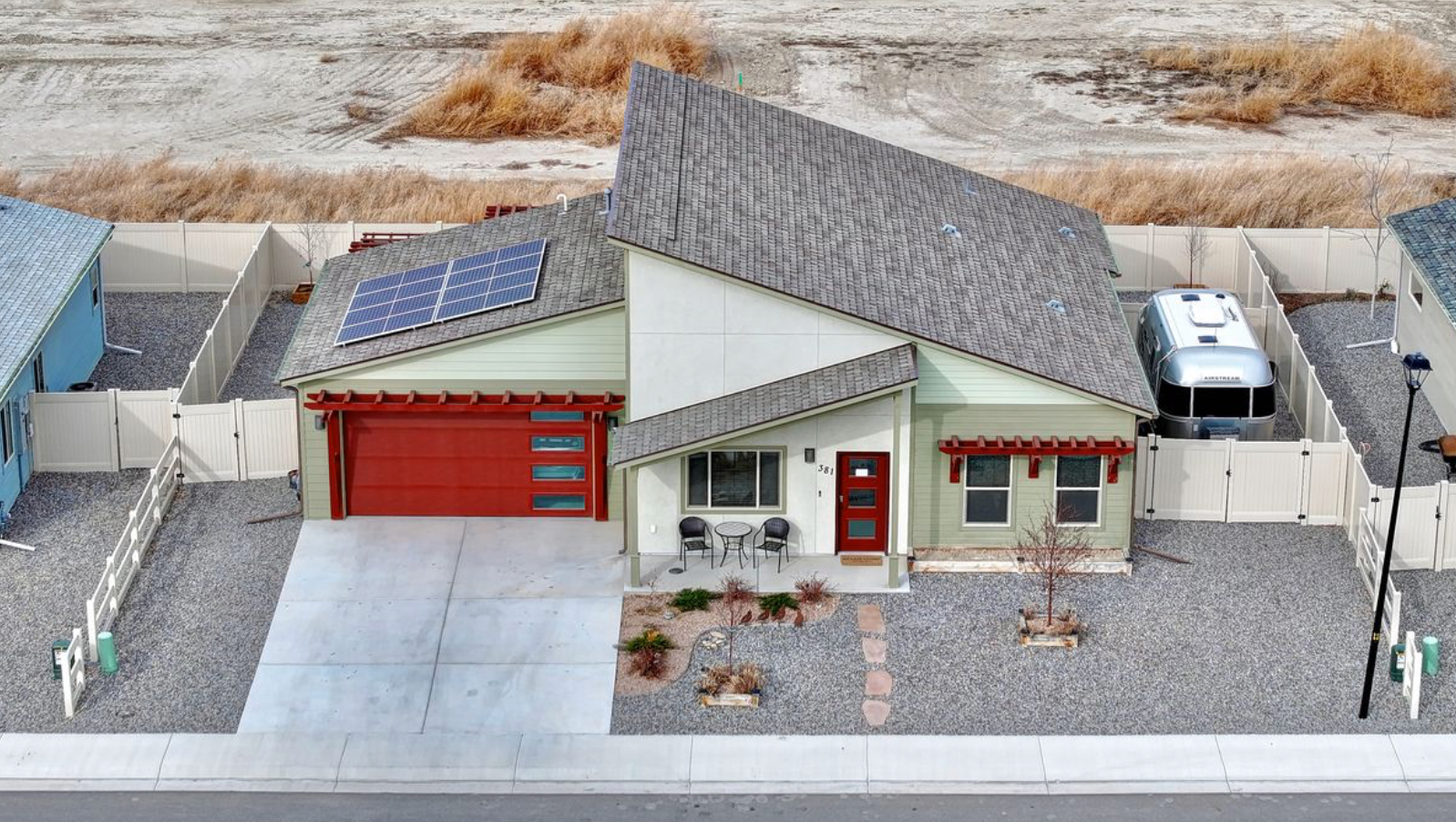Harnessing the Power of the Sun

This summer solstice, the longest day of the year in the Northern Hemisphere, marks a celestial milestone when the sun reaches its highest point in the sky, otherwise known as its Zenith, as it bathes the Earth in abundant sunlight. This astronomical event holds profound significance not only in the realms of culture and tradition but also in the realm of renewable energy.
At
Senergy Builders, we take pride in our application of solar energy into the
energy efficient homes
and residential neighborhoods we build. We not only have our word, but proud work to speak for ourselves!
As we celebrate the summer solstice today, let us explore the significant relationship between this celestial phenomenon and the harnessing of
solar energy, a clean, abundant, and sustainable source of power.
Celestial Alignment
The summer solstice occurs annually around the end of June when the Earth's axial tilt reaches its maximum inclination towards the sun. On this day, the sun appears at its highest altitude in the sky, casting the longest shadows and providing the most daylight of any day in the year. This alignment allows for an opportune time to harness solar energy.
Abundant Solar Resource
The summer solstice officially marks the beginning of a summer season of ample sunshine and radiant energy, offering a bountiful resource for solar power generation. Solar panels, composed of photovoltaic cells, convert sunlight into electricity through the photovoltaic effect.
During the summer months, when solar abundance is at its highest, solar panels can generate optimal electricity output, maximizing the efficiency and productivity of solar energy systems.
Environmental Benefits
The summer solstice serves as a reminder of the vast potential of solar energy to power homes, businesses, and communities while preserving the health of our planet. Solar energy offers numerous environmental benefits, including reduced greenhouse gas emissions, improved air quality, and mitigated climate change impacts. By harnessing the power of the sun, solar energy systems provide a clean, renewable alternative to fossil fuels, helping to transition towards a more sustainable and resilient energy future.
Strengthened Community
Solar energy empowers communities to take control of their energy future, reduce dependence on centralized power grids, and enhance energy resilience. Through community solar initiatives, neighborhoods, municipalities, and organizations can collectively invest in solar projects, share in the benefits of clean energy generation, and promote energy equity and access for all members of society.
Global Implications
The adoption of solar energy on a global scale has far-reaching implications for energy security, economic development, and environmental sustainability. By harnessing solar energy, countries around the world can diversify their energy portfolios, reduce dependence on fossil fuels, and accelerate the transition to a low-carbon economy. There’s more than enough solar energy for every human being on this planet. The summer solstice serves as a universal reminder of the sun's potential to illuminate the path towards a brighter, more sustainable future for us all.
The summer solstice is special for a multitude of reasons, and one that stands out to us at Senergy Builders is how it symbolizes the boundless potential of human ingenuity to harness the power of nature for the benefit of all.
Breaking Down Solar Energy

As we celebrate the longest day of the year, let us reflect on the transformative power of solar energy to illuminate our lives, power our communities, and safeguard the health of our planet for future generations.
Solar energy offers several benefits, ranging from environmental sustainability to economic prosperity and energy independence.
Renewable and Sustainable
Solar energy is a renewable resource that is inexhaustible and abundant. Unlike fossil fuels, which are finite and contribute to environmental degradation, solar energy is derived from the sun's rays, which will continue to shine for billions of years. Essentially a win-win situation.
Reduces Greenhouse Gas Emissions
Solar energy production does not release greenhouse gasses or other harmful pollutants into the atmosphere, unlike conventional energy sources such as coal, oil, and natural gas. Because of this, solar energy helps mitigate climate change and air pollution, safeguarding public health and the environment.
Energy Independence
Solar energy provides individuals, businesses, and communities with a decentralized and reliable source of electricity, reducing dependence on centralized power grids and volatile energy markets. This especially benefits remote or off-grid areas where access to traditional energy sources may be limited.
Low Operating Costs
Once installed, solar energy systems have minimal operating and maintenance costs compared to conventional power plants. Solar panels have no moving parts and require little upkeep, resulting in long-term savings on electricity bills and reduced reliance on utility providers.
Versatility
Solar energy systems come in a variety of sizes and configurations, making them suitable for a wide range of applications, from residential rooftops to large-scale solar farms. Solar energy can be deployed quickly and scaled to meet diverse energy needs, whether for powering individual homes, businesses, or entire cities.
Energy Security
Solar energy diversifies the energy portfolio and reduces reliance on imported fuels, enhancing energy security and resilience against supply disruptions and geopolitical tensions. By harnessing a domestic and abundant energy resource, solar energy strengthens energy independence and reduces vulnerability as well as inequality.
Environmental Benefits
In addition to reducing greenhouse gas emissions, solar energy production has numerous environmental benefits, including conserving water resources, preserving biodiversity, and mitigating habitat destruction associated with fossil fuel extraction and power generation. Solar energy systems have a minimal environmental footprint and can be deployed in harmony with natural ecosystems, minimizing disruption to land and wildlife.
Long-Term Sustainability
As technology advances and economies of scale drive down costs, solar energy continues to become more efficient, affordable, and accessible. Investments in solar energy infrastructure contribute to long-term sustainability and resilience, providing clean, reliable, and affordable energy for generations to come.
The harnessing of solar energy from our beautiful and bountiful sun contributes greatly to our projects and values at Senergy Builders. We not only work to accelerate the transition towards a carbon-neutral future but we also work to foster a more just, prosperous, and sustainable society for generations to come.
Happy Summer Solstice from us to you!
You might also like



Book a Service Today
We will get back to you as soon as possible
Please try again later
SENERGY BUILDERS SPECIALIZES IN ENERGY-EFFICIENT CUSTOM HOME CONSTRUCTION SERVICES
SENERGY BUILDERS SPECIALIZES IN ENERGY-EFFICIENT CUSTOM HOME CONSTRUCTION SERVICES
SENERGY BUILDERS SPECIALIZES IN ENERGY-EFFICIENT CUSTOM HOME CONSTRUCTION SERVICES
SENERGY BUILDERS SPECIALIZES IN ENERGY-EFFICIENT CUSTOM HOME CONSTRUCTION SERVICES
Contact Details
Contact Details
Address: 1111 South 7th Street
Grand Junction, CO 81501
Address: 1111 South 7th Street
Grand Junction, CO 81501
Phone Number:
Phone Number
970.248.8500
Powered by Third Loft Marketing and Website Design

